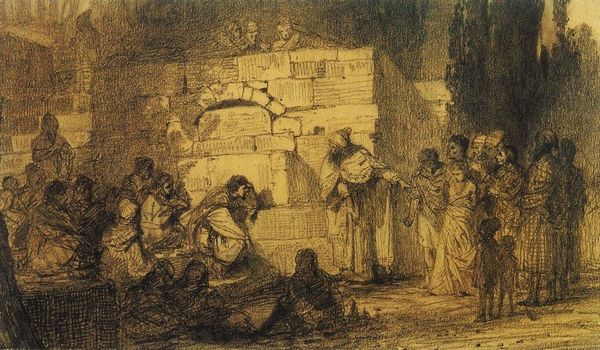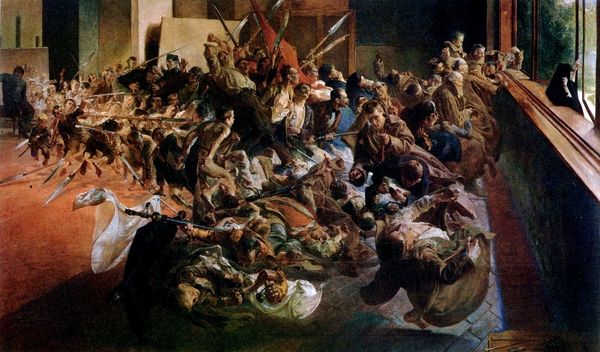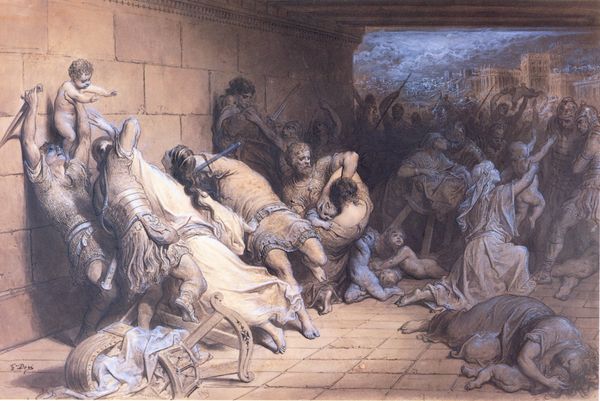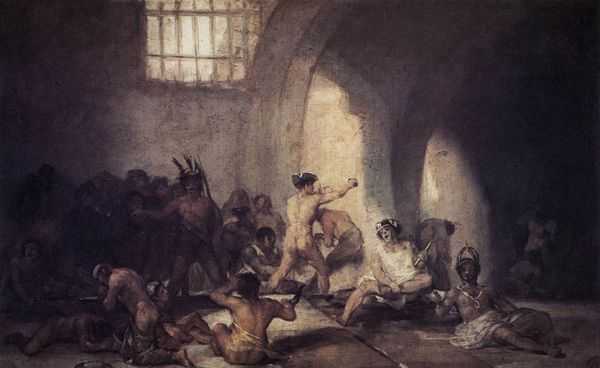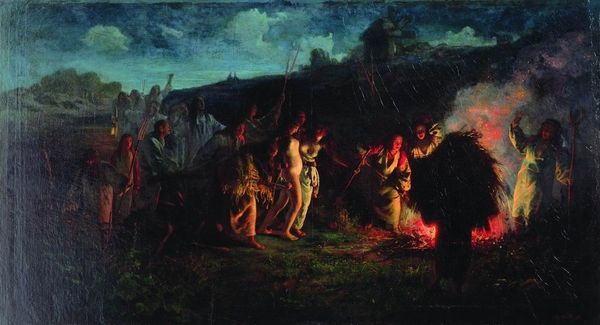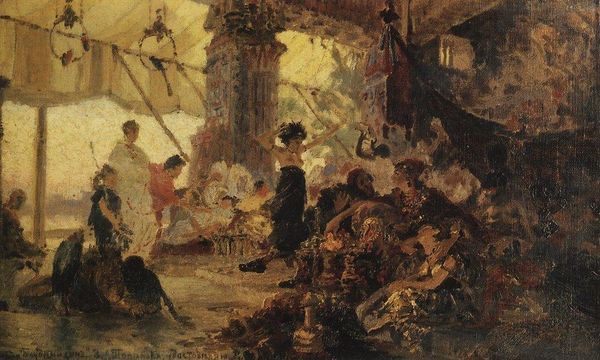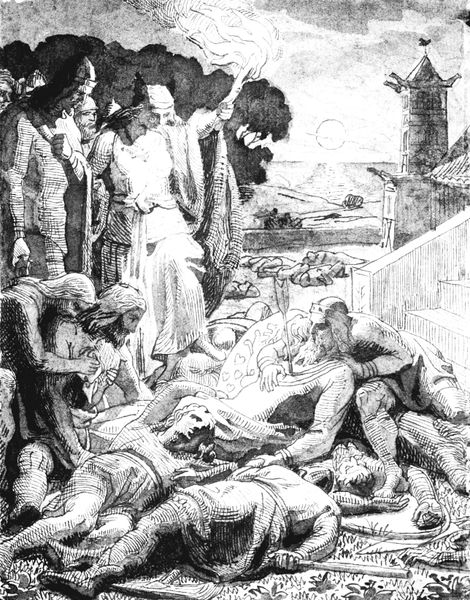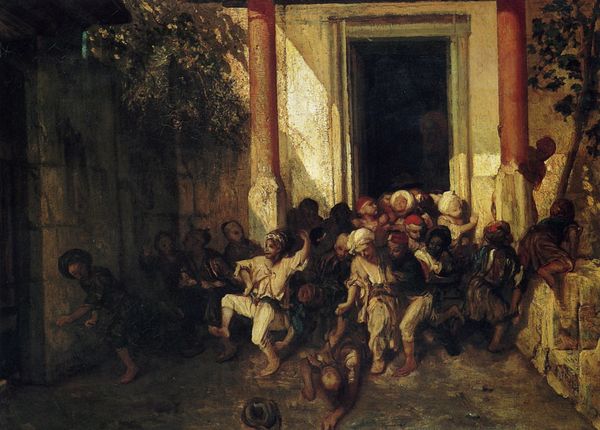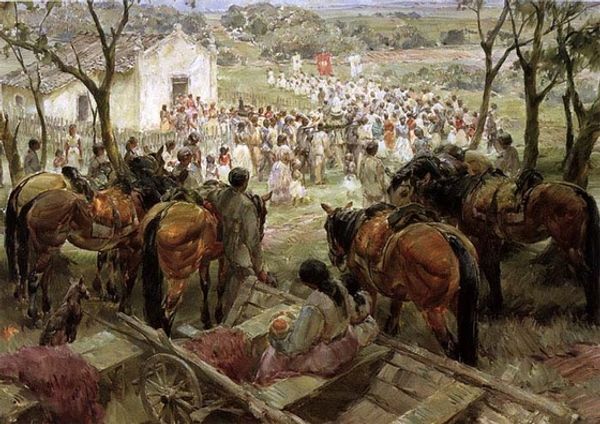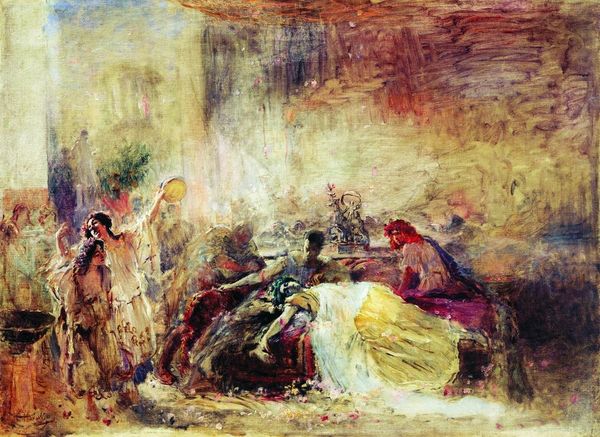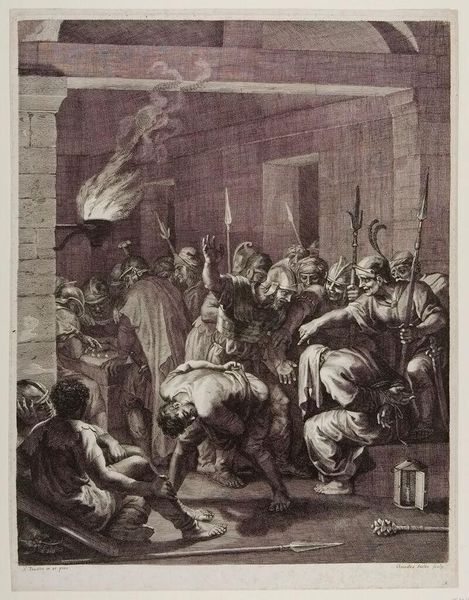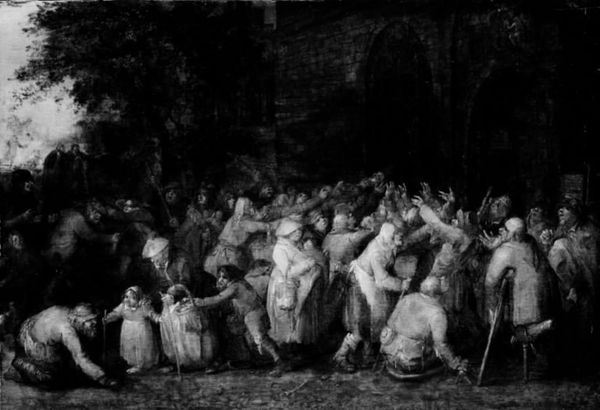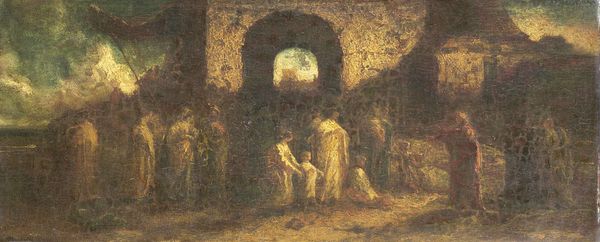
Copyright: Public domain
Editor: Here we have Nikolai Ge’s "Death of Virginia, Study" from 1857. It's a painting, depicting quite a dramatic scene, full of figures in what seems to be ancient Roman dress. There's a lot of commotion, and a central figure lying on the ground... It all feels very theatrical, almost like a stage production. What do you make of it? Curator: Ah, yes. A passionate depiction of a story ripe with moral fervor! To me, it feels less like witnessing an event, and more like overhearing a whispered confession about sacrifice and power. Notice how the cool, muted tones amplify the gravity, pulling you into the intimate horror. The composition almost guides your eye in a dance between the mourning figures, towards the distant riders—symbolic, perhaps, of the encroaching tyranny that motivates Virginia's death. Editor: I see what you mean about the figures almost being posed, emphasizing the sacrifice and resistance against power. But I didn't notice the muted color tones amplifying the drama, as it's slightly overshadowed by the very bold subject matter. Do you think Ge was successful in conveying the emotional weight of the story here? Curator: That's a perceptive question. You see, the raw emotional power isn't delivered through bombast but through a quieter kind of insistence. Consider the gaze of the surrounding figures - that somberness seeps into you gradually, wouldn't you say? And for me the success here isn't merely in representation but in making us feel a kind of unwilling complicity in that act of resistance. As if by seeing, we are forced to take a stand with her. It lingers in the mind, a testament to a tragic resolve. Editor: That's an interesting take. I hadn't considered the viewer's role in the event, or the lingering effects. So, while initially viewing the drama and almost "stage-like" quality as a bold statement, it sounds like the painting instead delivers a subdued and slow burning effect. Curator: Precisely. A story not just told, but internally lived!
Comments
No comments
Be the first to comment and join the conversation on the ultimate creative platform.
